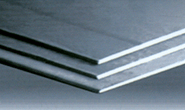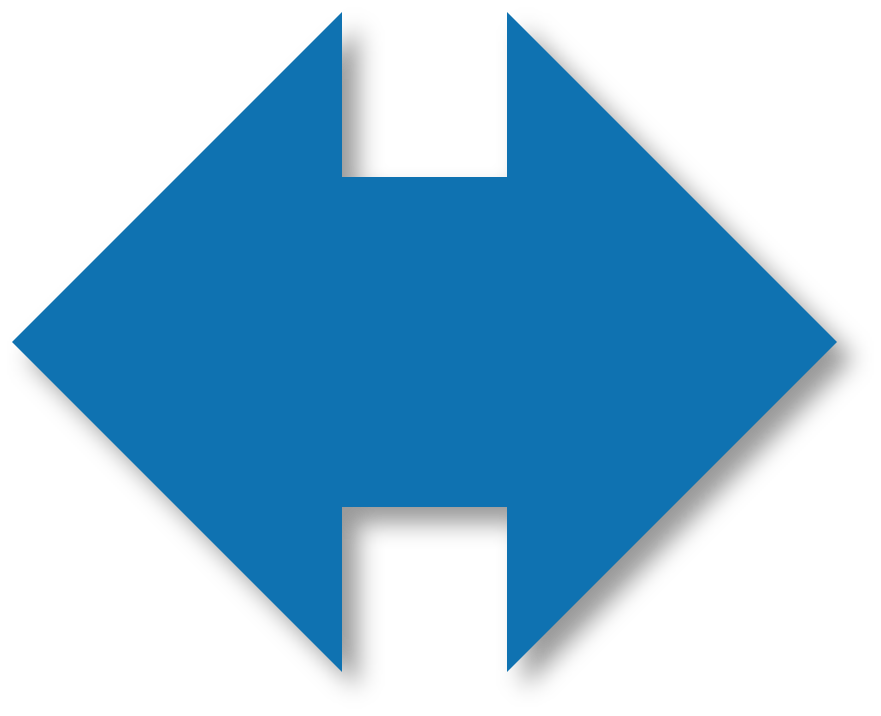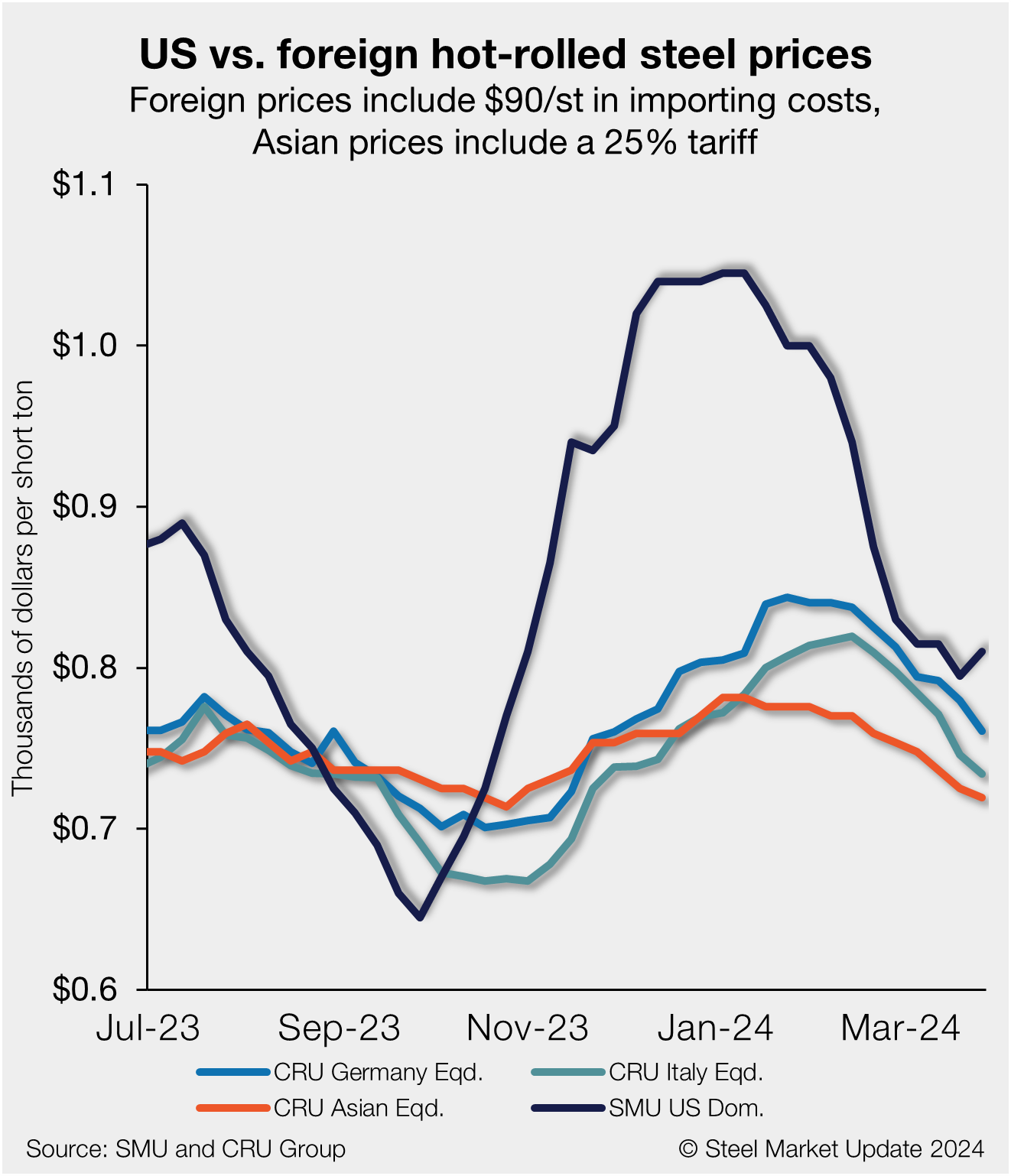Steel Products Prices North America

What Might Right Inverted HRC-Plate Price Spreads?
Written by Michael Cowden
January 14, 2021
Plate prices usually carry a premium to hot-rolled coil tags – but that typical relationship has been turned upside down since early October.
The question now: Could price hikes of at least $140 per ton announced by some North American plate mills last week help narrow the gap?
![]() The Numbers
The Numbers
SMU’s hot-rolled coil price currently stands at $1,080 per ton ($54/cwt), higher than the prior all-time high of $1,070 per ton recorded in July 2008. Plate prices are at $960 per ton ($48/cwt), their highest reading since $975 per ton in mid-April 2019–but still $120 per ton below hot-rolled coil prices.
Plate typically costs more than coil because it requires more time on the mill to make – and that typically means a higher cost to consumers.
But plate prices can fall below sheet prices. Plate is more exposed to energy than sheet, for example, and the energy sector was slower than others to rebound following the outbreak of the Covid-19 pandemic.
Sheet, meanwhile, is more exposed to consumer markets such as automotive and appliance – end markets that have benefitted from people spending less on travel, restaurants and experiences and more on things.
The upshot: When energy markets are weak and automotive markets are strong, as was the case for much of the second half of 2020, sheet can and does overtake plate. And as last year showed, that process can happened quickly.
Hot-rolled coil hit a 2020 low of $440 per ton on Aug. 11 – or less than current scrap prices. Plate at the time was at $590 per ton, or $150 per ton above sheet. Prices for both products have risen consistently since then. But sheet’s rise (145.5%) has been meteoric compared to plate’s comparatively modest gains (62.7%).
New Sheet Capacity – the Sheet-Plate Equalizer?
Plate and sheet prices will probably continue moving upward in the short-term. But sheet prices are near a peak while plate prices still have some catching up to do, one Great Lakes service center source said.
Prevailing coil prices are approximately $1,100 per ton, and some mills are seeking as much as $1,200 per ton. The catch: “You can’t order spot material. There is not a pound available until April,” he said.
Where might sheet prices peak? The 2008 peak, adjusted for inflation, is nearly $1,300 per ton – something that might indicate sheet still has some upward potential. Plate offers, fob mill, are as low as $940 per ton, although prices vary widely by mill and some customers are effectively on allocation, he said.
“The plate guys are looking at the coil guys saying, ‘Hey, we’d like more of that,’” the Great Lakes source said. “They should be smiling because they are making a lot of money. They’re just not making as much as they’d like to.”
Barring any unforeseen events–a semiconductor shortage resulting in auto plant shutdowns, additional political turmoil, or a worsening of the Covid-19 situation, for example–sheet prices should moderate as new capacity begins to come online this summer when SDI starts up its new mill in Sinton, Texas. And with no new plate capacity coming online this year, that might be a natural time for plate to regain lost ground, he said.
A West Coast end user agreed that plate prices should remain on an upward path. Wind tower demand is strong, energy markets are expected to recover later this year, and construction appears to be on steady ground even if heavy equipment, railcar and shipbuilding/barge are only “so-so.”
That’s a change from 45-60 days ago when it was possible for plate consumers to get material “all day long.” Now plate prices are up and availability is limited – factors that have characterized the sheet market for months but that are more recent to the plate scene, he said.
An East Coast service center source, meanwhile, said low inventory levels could also help plate prices catch up to sheet tags. But, even if stocks are low, he said he felt uncomfortable ordering material at current lofty prices.
“The whole market is just … freaking crazy,” he said. “I don’t know what is a good number or a bad number.”
By Michael Cowden, michael@steelmarketupdate.com

Michael Cowden
Read more from Michael CowdenLatest in Steel Products Prices North America

SMU price ranges: Sheet, plate largely unchanged
Sheet prices varied this week. While hot-rolled (HR) coil pricing was largely flat, cold-rolled (CR) coil and tandem product pricing eased slightly reflecting the momentum shift seen last week for HR coil. SMU’s average HR coil price was flat from last week at $835 per short ton (st) – potentially emphasizing the tension between competing […]

Nucor posts $830/ton spot HR price for week of April 8
Nucor said its spot hot-rolled (HR) coil price this week will be $830 per short ton (st).

US HR prices rebound, no longer near parity with imports
US hot-rolled coil and offshore hot band moved further away from parity this week as stateside prices have begun to move higher in response to mill increases.

Galvanized buyers report solid demand, balanced inventories
Galvanized buyers reported solid demand and balanced inventories this week and were anticipating the sheet price increase announced by Cleveland-Cliffs on Wednesday.
HRC vs. CRC price spread jumps in second week of new year
The spread between cold-rolled coil (CRC) and hot-rolled coil (HRC) prices jumped during the week of Jan. 8 as cold rolled tags continued to rise while hot rolled tags held steady.
